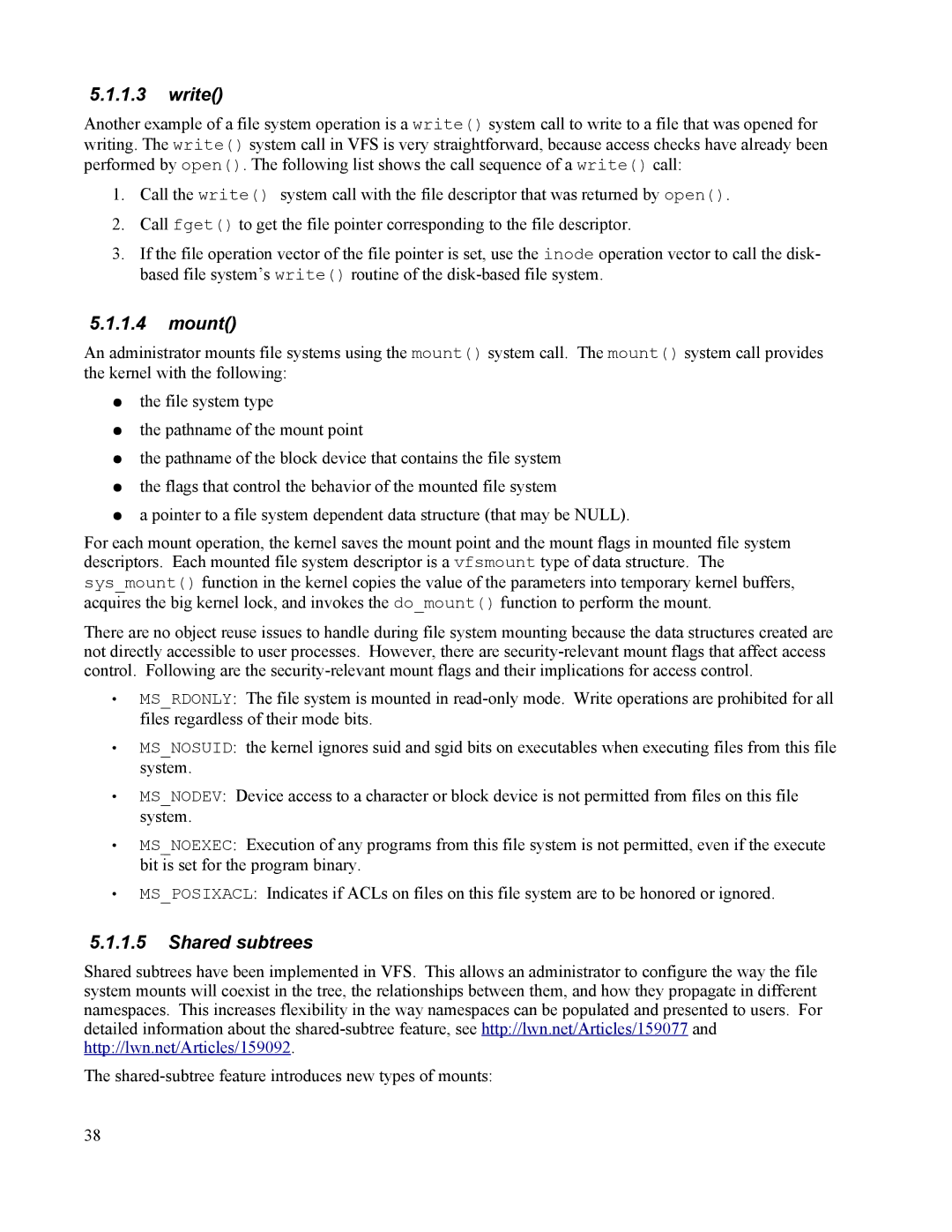5.1.1.3write()
Another example of a file system operation is a write() system call to write to a file that was opened for writing. The write() system call in VFS is very straightforward, because access checks have already been performed by open(). The following list shows the call sequence of a write() call:
1.Call the write() system call with the file descriptor that was returned by open().
2.Call fget() to get the file pointer corresponding to the file descriptor.
3.If the file operation vector of the file pointer is set, use the inode operation vector to call the disk- based file system’s write() routine of the
5.1.1.4mount()
An administrator mounts file systems using the mount() system call. The mount() system call provides the kernel with the following:
●the file system type
●the pathname of the mount point
●the pathname of the block device that contains the file system
●the flags that control the behavior of the mounted file system
●a pointer to a file system dependent data structure (that may be NULL).
For each mount operation, the kernel saves the mount point and the mount flags in mounted file system descriptors. Each mounted file system descriptor is a vfsmount type of data structure. The sys_mount() function in the kernel copies the value of the parameters into temporary kernel buffers, acquires the big kernel lock, and invokes the do_mount() function to perform the mount.
There are no object reuse issues to handle during file system mounting because the data structures created are not directly accessible to user processes. However, there are
•MS_RDONLY: The file system is mounted in
•MS_NOSUID: the kernel ignores suid and sgid bits on executables when executing files from this file system.
•MS_NODEV: Device access to a character or block device is not permitted from files on this file system.
•MS_NOEXEC: Execution of any programs from this file system is not permitted, even if the execute bit is set for the program binary.
•MS_POSIXACL: Indicates if ACLs on files on this file system are to be honored or ignored.
5.1.1.5Shared subtrees
Shared subtrees have been implemented in VFS. This allows an administrator to configure the way the file system mounts will coexist in the tree, the relationships between them, and how they propagate in different namespaces. This increases flexibility in the way namespaces can be populated and presented to users. For detailed information about the
The
38
